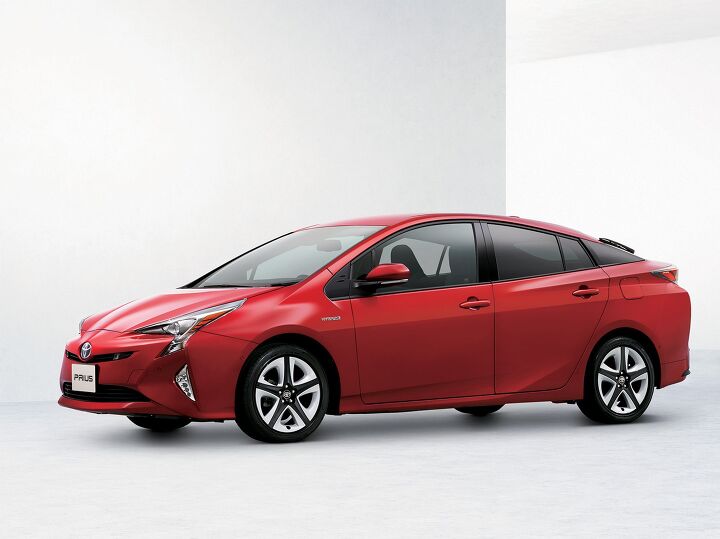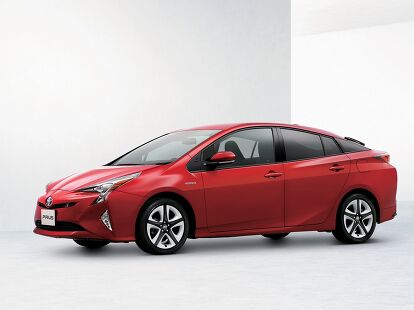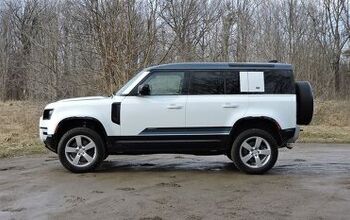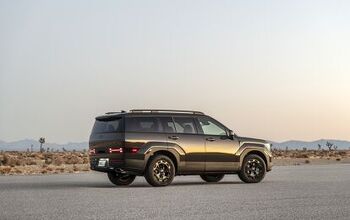7 All New Things You Should Know About the 2016 Toyota Prius

The 2016 Toyota Prius was unveiled earlier last month and now more details on the hybrid’s technology has been released. Here’s what you need to know:
1. Not Just The Same Old Engine
Although the new Toyota Prius retains the 1.8-liter VVT-i gasoline engine found in the current model, the powerplant has been entirely re-engineered, according to Toyota, resulting in better performance, fuel economy and reductions to size and weight. Although fuel economy figures still haven’t been revealed, the Japanese automaker expects the car to see a 10-percent improvement in EPA estimated MPG on the core models, while the Prius Eco will see even greater improvements.
As Toyota mentioned at the model’s debut, the new engine has a maximum thermal efficiency of 40 percent thanks to a large-volume exhaust gas recirculation (EGR) system and improvements in combustion efficiency. There is also a redesigned air intake port that improves airflow inside the combustion chamber, while Toyota also redesigned the coolant passages to optimize internal engine temperature.
2. Lighter Components
In addition to the engine being re-engineered, Toyota also redesigned the transaxle and electric motor to deliver a reduction in their combined weight. The electric motor itself is more compact with a better power-to-weight ratio and there is a 20-percent reduction in mechanical losses through friction compared to the previous Prius.
3. A Lithium-Ion Battery … Finally!
The hybrid will be available with either a new lithium-ion or a new nickel-metal hydride battery. Energy density has been increased so that more power can be obtained from a smaller unit, allowing the battery to be relocated under the rear seat to increase cargo space.
SEE ALSO: 2016 Toyota Prius Revealed: 12 Things You Need to Know
4. A Sportier Prius?
All the engineering improvements are complemented by an increase of more than 60 percent in body torsional rigidity through the use of Laser Screw Welding, structural adhesives and uniquely shaped frame structures. The use of high-tensile steel has been increased from 3 percent to 19 percent. Along with a new double wishbone suspension and a lower center of gravity, Toyota hopes the new Prius offers a sportier ride.
5. A New Look Brings New Benefits
The lower overall body does make for a better center of gravity, but it also has other advantages. The high point of the roof is now 170 mm closer to the front of the car, offering better headroom, while the “nose height” is 70 mm lower and the hood section near the windshield is 62 mm lower, allowing for better visibility for the driver.
6. New High-Def Screens
Inside, the multi-information display of the Prius is now delivered with full color, high resolution graphics on dual 4.2-inch multi-information display screens. The right-hand display will show speed, fuel level and other basic data while the left-hand section is where the driver can select preferred content using a switch on the steering wheel. In addition, there’s a new color head-up display that projects essential vehicle data and alerts on the lower section of the windshield.
7. More Safety, More Technology
Available safety features include the Toyota Safety Sense P package that features a Pre-collision System with Pedestrian Detection. By using millimeter-wave radar and a single-lens camera, the Prius is able to detect both cars and pedestrians. The package also comes with Full-speed Dynamic Radar Cruise Control.
Look for our first drive of the new 2016 Toyota Prius soon, with cars arriving in dealerships in early 2016.
Discuss this story on our Toyota Prius Forum

Jason Siu began his career in automotive journalism in 2003 with Modified Magazine, a property previously held by VerticalScope. As the West Coast Editor, he played a pivotal role while also extending his expertise to Modified Luxury & Exotics and Modified Mustangs. Beyond his editorial work, Jason authored two notable Cartech books. His tenure at AutoGuide.com saw him immersed in the daily news cycle, yet his passion for hands-on evaluation led him to focus on testing and product reviews, offering well-rounded recommendations to AutoGuide readers. Currently, as the Content Director for VerticalScope, Jason spearheads the content strategy for an array of online publications, a role that has him at the helm of ensuring quality and consistency across the board.
More by Jason Siu























































Comments
Join the conversation
Front end looks like last gen celica. To bad it was used on a prius
Don't like the looks? That must be why Toyota has a hybrid in the Camry, Avalon, Highlander and Rav4!